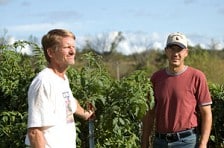Taking a bet that small equals big
.floatimg-left-hort { float:left; } .floatimg-left-caption-hort { float:left; margin-bottom:10px; width:300px; margin-right:10px; clear:left;} .floatimg-left-vert { float:left; margin-top:10px; margin-right:15px; width:200px;} .floatimg-left-caption-vert { float:left; margin-right:10px; margin-bottom:10px; font-size: 12px; width:200px;} .floatimg-right-hort { float:right; margin-top:10px; margin-left:10px; margin-bottom:10px; width: 300px;} .floatimg-right-caption-hort { float:left; margin-right:10px; margin-bottom:10px; width: 300px; font-size: 12px; } .floatimg-right-vert { float:right; margin-top:10px; margin-left:10px; margin-bottom:10px; width: 200px;} .floatimg-right-caption-vert { float:left; margin-right:10px; margin-bottom:10px; width: 200px; font-size: 12px; } .floatimgright-sidebar { float:right; margin-top:10px; margin-left:10px; margin-bottom:10px; width: 200px; border-top-style: double; border-top-color: black; border-bottom-style: double; border-bottom-color: black;} .floatimgright-sidebar p { line-height: 115%; text-indent: 10px; } .floatimgright-sidebar h4 { font-variant:small-caps; } .pullquote { float:right; margin-top:10px; margin-left:10px; margin-bottom:10px; width: 150px; background: url(http://www.dmbusinessdaily.com/DAILY/editorial/extras/closequote.gif) no-repeat bottom right !important ; line-height: 150%; font-size: 125%; border-top: 1px solid; border-bottom: 1px solid;} .floatvidleft { float:left; margin-bottom:10px; width:325px; margin-right:10px; clear:left;} .floatvidright { float:right; margin-bottom:10px; width:325px; margin-right:10px; clear:left;}
It is late in the growing season at Coyote Run Farm in Marion County, and as with any farm that means harvest and cutting the last growth of hay.
Matt Russell and Pat Standley aren’t counting on the much ballyhooed reports of record corn and soybean yields to count the season a success.
But they do anticipate that in a few years their 110 acres northeast of Lacona will provide the same net profits as a 1,000-acre operation.
Coyote Run is not a conventional grain and meat operation.
The bounty this year comes from heirloom tomatoes, peculiar peppers that date to the 19th century and the obscure recipes of African-American cooks, and turkeys, with at least one species that might have had a relative gracing that first Thanksgiving meal.
And let’s not forget laying hens, hormone-free beef and a horse and mule operation that traces its roots to Russell’s first pony, a gift when he was growing up on a farm near Anita in Cass County.
That is the Coyote Run package, a model of small farming operations that target niche markets and dedicated customers who don’t carry quality and mass production in the same thought.
“Our strategy is to grow a high quality that is not available elsewhere,” Russell said.
Russell helps other farmers follow that path and find markets for their locally grown goods. He is the state food policy coordinator at Drake University’s Agricultural Law Center and coordinates the Buy Fresh Buy Local campaigns for the university and Greater Des Moines.
Standley describes himself as a “zookeeper gone wild” who has given up a job at Blank Park Zoo to work full time on the farm.
They bought the farm in 2005 and began supplying produce for Basil Prosperi’s Lucca restaurant in downtown Des Moines and selling their goods at the Downtown Farmers Market.
Russell and Standley didn’t have a specific business plan, but they did want to provide locally grown produce that wasn’t commonly available. They took a business course that focused on small-market farms, which at least had them view Coyote Run as a business.
“While we don’t have a formal business plan, we’ve definitely been doing planning and goal setting on a continual basis,” Russell said. “We generally discuss things and make decisions with a focus on hitting long-term goals, although most of our production happens in real time on a short-term basis.”
For the long term, they are rehabilitating crop ground to pasture, hoping to improve the quality of the soil and forage to support a herd of 35 to 40 cattle and eight equines. They are juggling those numbers to find the right mix of cattle, horses and mules.
For the time being, they plan to finish a small number of cattle for market on existing pasture, some of which they have gradually taken out of crop production. When they purchased the farm, they rented about 42 acres to local farmers to grow corn and soybeans. That was reduced to 18 acres this year. Next year, they will not rent any land.
In addition, they have added two ponds with hydrants and frost-free water tanks below the dams to provide water for the livestock.
“Livestock will never actually be in the ponds, which should help maintain the ponds and their immediate surroundings as wildlife areas and to hold soil and improve water quality,” Russell said.
The beef, which comes from a herd of Angus cattle that has been owned and managed by Russell’s family since 1969, is sold as shares at about $4.50 a pound. At present, they are fed from grain that’s grown on the Anita farm and is free from animal byproducts.
That price per pound also is what Russell said markets will support for Coyote Run’s 64-bird flock of heritage turkeys. At least two of the species, Narragansetts and Black Spanish, were headed for extinction until the gene pool was resurrected over the last 10 to 15 years. It is believed that the Black Spanish, rather than a wild turkey, was part of the first Thanksgiving feast.
Eventually, Russell and Standley will relocate at least some of the cattle to the Lacona farm to be finished for market on forage and pasture grasses.
Most of the farm, about 100 acres, is in pasture, some of which is currently being cut for hay and sold to “help with cash flow.” However, the long-term plan is to keep the grasses on the land to support livestock.
Coyote Run also has about two acres of gardens, the land that grows 40 varieties of heirloom tomatoes, not to mention green beans, artichokes, brussel sprouts, potatoes, arugula, spinaches, lettuces and other produce that is sold at the Downtown Farmers Market.
That produce includes the fish pepper, an elegant, variegated variety that was so obscure that it was known only to African-American cooks in the Chesapeake Bay area. They used it in the 19th century in white sauce that accompanied crab and other seafood. According to lore, the plant made its way to the 20th century when the grandson of one of the chefs swapped seeds for honey bees, whose sting he used to treat arthritic “miseries.”
Standley said it was basically kept in circulation by people who would plant it in patio pots.
The gardens are tended by hand, with the help of a tiller. Though the fruits and vegetables are not labeled as organic, no chemicals are used for weed or pest control. Instead, they rotate varieties to different locations in the garden, pull weeds and, after vegetables are picked, allow a flock of 250 Gold Star laying hens to apply their own brand of pest control and soil turning.
“When you do it by hand, you’re able to do it at a really high quality,” Standley said.
Preparing for and attending the market is labor intensive. Russell and Standley spend about 30 hours loading, setting up, being at the market, tearing down and unloading when they return home. That time doesn’t include planting, tilling and harvesting.
“The return to labor is pretty low,” Russell said. “But, we are building wealth and hitting our goals and building a small business that we think is sustainable over a couple of decades.”
Russell anticipates gross sales of about $30,000 for the 29-day market season, including the late events in November and December.
Their presence at the market helps generate return customers who also buy directly from the farm. Coyote Run maintains a customer list of about 250 people. In fact, they have been contacted by a woman from California who was interested in buying one of their mules.
Russell also notes that the operation has contributed about $100,000 back to the economy over the last four years in building the ponds, rebuilding a barn, buying feed and fuel – Coyote Run owns one tractor.
“Some people would have taken a bulldozer to the buildings and simply added the 110 acres to an existing conventional and ever-expanding commodity farm,” Russell said. “Instead we bet the farm that we could create a profit center that sustains natural resources, our own family and the community in which we live.
“So far the bet is paying off.”









